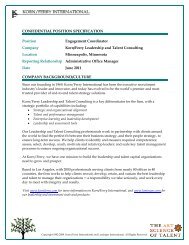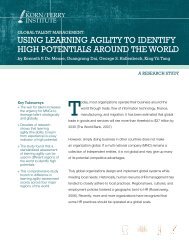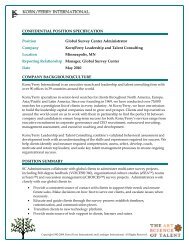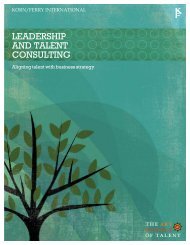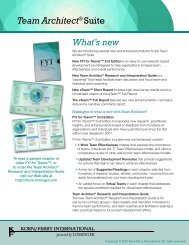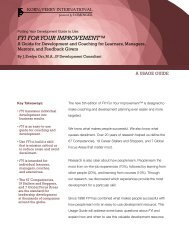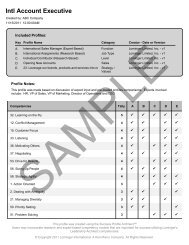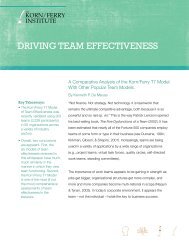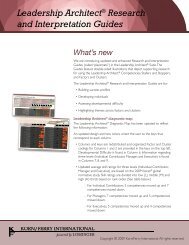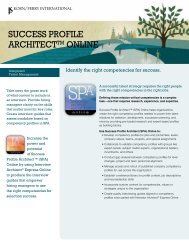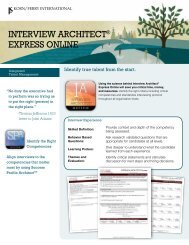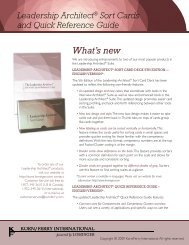understanding and applying tools to identiFy and ... - Lominger
understanding and applying tools to identiFy and ... - Lominger
understanding and applying tools to identiFy and ... - Lominger
Create successful ePaper yourself
Turn your PDF publications into a flip-book with our unique Google optimized e-Paper software.
FYI For Your Improvement incorporates many of the same featuresas FYI for Learning Agility <strong>and</strong> provides remedies for each of the 67Leadership Architect ® Competencies (as well as the 19 Career Stallers<strong>and</strong> S<strong>to</strong>ppers). Each chapter in FYI for Learning Agility provides a lis<strong>to</strong>f Leadership Architect ® Competencies that are closely linked (Strong,Moderate, or Light) <strong>to</strong> each dimension of learning agility. This allows forsimultaneous development by targeting the specific competencies thatsupport a learning agility dimension.Tips for Developing Learning AgilityAny effort at development, whether it is aimed at learning agility orcompetencies, will not be as successful unless the individual beingcoached is aware that he or she has a need, accepts that need, <strong>and</strong>is motivated <strong>to</strong> do something about it. Adhering <strong>to</strong> best practiceswhen delivering feedback <strong>and</strong> taking the time <strong>to</strong> work through anydefensiveness or blind spots that the individual has is key <strong>to</strong> this effort.Also, treat each individual’s set of development needs <strong>and</strong>corresponding solutions as unique. While it is good <strong>to</strong> have somereliable solutions <strong>to</strong> apply <strong>and</strong> an idea of what has tended <strong>to</strong> work well inthe past, make sure <strong>to</strong> approach each situation with a fresh perspective<strong>and</strong> involve the individual in crafting a set of development strategies thatbest suits his or her needs.Any effort at development,whether it is aimedat learning agility orcompetencies, will not beas successful unless theindividual being coached isaware that he or she has aneed, accepts that need, <strong>and</strong>is motivated <strong>to</strong> do somethingabout it.Frequently Asked QuestionsWe have included some of the most commonly asked questions aboutdeveloping learning agility in individuals. If you have more questions,you may want <strong>to</strong> contact us at cus<strong>to</strong>merservice@kornferry.comor by calling +1 877-345-3610 (US/Canada) or +1 952-345-3610(International).1. Are some aspects of learning agility more difficult <strong>to</strong> develop thanothers?Yes. Each individual dimension has a level of developmentaldifficulty associated with it (these are listed in FYI for LearningAgility) <strong>and</strong> the levels range from Easy <strong>to</strong> Hard. If you aggregatedevelopmental difficulty across the four learning agility fac<strong>to</strong>rs,People Agility <strong>and</strong> Change Agility emerge as the most difficult <strong>to</strong>develop <strong>and</strong> Results Agility is the easiest.13



